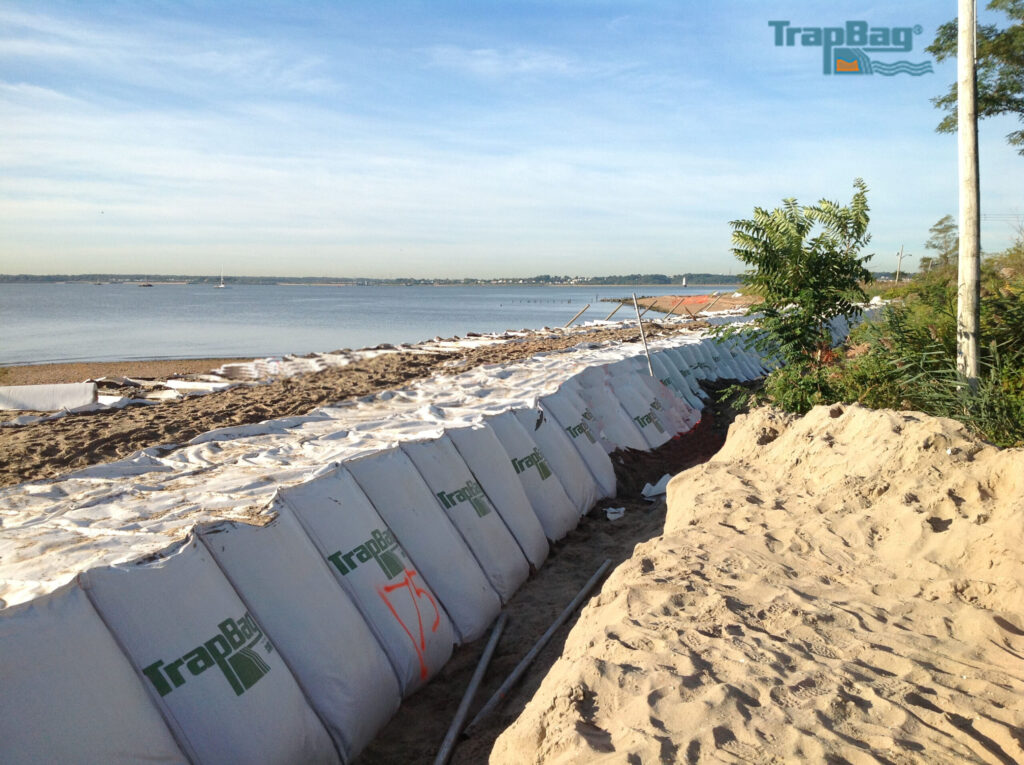How Can Sand Dunes Be Saved? 4 Solutions
How sand dunes can be saved comes down to what’s causing them to erode. Once the causes are understood, we can use these four methods to save them.

Dunes are both natural wonders of the world’s shorelines and protective barriers for the land behind them. However, these beautiful formations are also vulnerable to erosion and collapse.
But, how can sand dunes be saved? To understand which of the four restoration methods we recommend is best, it’s important to know what’s causing the problem in the first place.
First: What Causes Sand Dune Erosion?
To understand how to protect and restore sand dunes, it’s important to know what causes them to erode in the first place. These are some of the most common causes.
Land Development
While dune erosion is a natural process due to wind and water action, human activity can make the process happen even faster. This is especially true in areas where the land has been disturbed for beachfront property and in places where entire dunes were gutted or removed to build roads and other types of infrastructure.
One of the key problems with how land development has worked in the past is that it used to involve placing buildings and properties in places with the best possible views of the water. This often meant clearing away plants and vegetation in the dunes to make way for construction, destabilizing them.
Invasive Species
Whether it’s through intentional human intervention, accidental introduction, or changes in migratory patterns, invasive species can spell danger for dunes in indirect ways.
Plants, animals, and fungi can all qualify as invasive species. However, if native plants on the dunes don’t have any natural defenses against these unfamiliar invasive species, they can quickly become wiped out and destabilize the dune.
For example, suppose someone visiting the shoreline accidentally introduces Japanese beetles to the beach by unwittingly carrying them on their car. Japanese beetles are extremely destructive horticultural pests, so this one accidental visit could cause them to multiply and eat the dune vegetation, killing it. In turn, this destabilizes the dune because no live plants are present to grip the sand with their roots.
Tourism
Humans can also “love coastal dunes to death” in many cases when they come to visit these natural wonders as tourists. In addition to the more insidious activities like picking plants or taking sand samples home with them, many people inadvertently displace the sand when it sticks to their shoes, clothes, and bodies. Heavy foot traffic can also cause dunes to degrade over time.
This is because sand tends to naturally become displaced unless there are boardwalks or other measures in place to prevent people from creating their own paths across the dunes.
Climate Change
Climate change is causing both coastal storms and sea level rise to worsen every year. In turn, because these storms batter the shoreline and cause beaches to disappear or wash away, dunes are at greater risk of eroding due to the warming effects of climate change. This can also make the effects of climate change even worse for inland regions.
4 Best Methods to Save Sand Dunes
1. Sand Dune Preservation with Native Vegetation
In areas devastated by land development and invasive species, dune restoration often involves planting native vegetation—and eradicating invasive species that could impact their growth, in the latter situation.
For most sand dune restoration projects, reintroducing native shrubs and grasses is one of the key steps. These plants are accustomed to the sand composition and have adapted to being able to establish roots and absorb the sand’s nutrients accordingly.
2. Reduction of Human Activity
Another common method of stabilizing sand dunes is to reduce how much interaction people can have with them. Preventing people from walking directly on the dunes can keep the sand from shifting too much due to foot traffic.
This often takes the form of education, posting signage, and providing boardwalks and stairs to make moving over and around dunes easier. Providing rules for visitors and encouraging them to use only certain areas can be effective in preventing rapid destabilization.
3. Dune Nourishment
Similar to the process of beach nourishment on flatter stretches of the shoreline that have washed away, dune nourishment is the process of adding sand back to depleted dunes.
The dune nourishment process can be tricky and expensive. It involves finding sand of a nearly identical composition from other sources and introducing it to the beach with as few negative impacts on the local environment as possible. When done incorrectly, it can cause the sand to wash away quickly or potentially cause other impacts on local flora and fauna.
However, when done correctly, the sand can integrate into the existing dune, strengthening it and slowing the erosion process.
4. Sand Dune Core Stabilization
Sometimes, dunes have cores made of layers of matter that erode even more easily than sand, such as peat soil or clay. In these situations, the dunes can collapse altogether when the core is exposed and washed away by storms and waves. However, shielding these layers with an artificial core can protect the dune from eroding, especially when combined with planting local dune grass and other plants.
Stabilizing the cores of these dunes can make it easier for sand to naturally wash up to the site of the dune and replenish themselves.
Using TrapBag® for Sand Dune Stabilization
Environmental protection services and state and national park agencies can use TrapBag to stabilize the cores of sand dunes. This reinforces the stability of the dune, slowing down its erosion or stopping it altogether by giving it a firm anchor on the shoreline.
During coastal flooding and storm surge events, dunes can erode or wash away easily. However, with TrapBag as a core stabilizer, the dune has a method of protection even during the most catastrophic wave events.
Learn More About How TrapBag Helps Restore Sand Dunes
Many organizations and agencies have a vested interest in protecting and restoring the dunes in their area. TrapBag can be a simple, cost-effective solution to restoring these natural wonders and barriers. To learn more about how TrapBag barriers may be able to preserve your sand dunes, call us at (239) 674-6611 or visit our online shop today.
Meet the author
Get the Dirt Before the Flood Hits
Stay ahead of flooding, erosion, and disaster response challenges. The Dirt, TrapBag’s monthly newsletter, delivers field-tested tips, real-world case studies, and the latest in barrier technology straight to your inbox.

